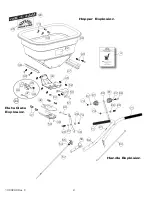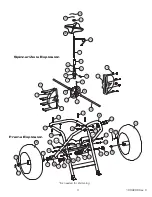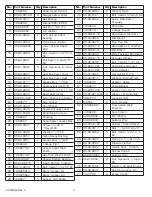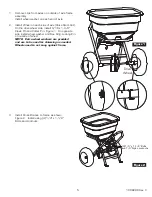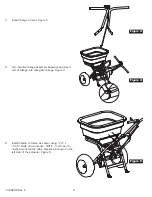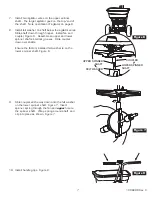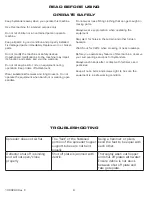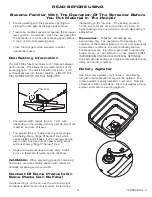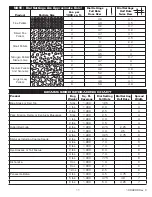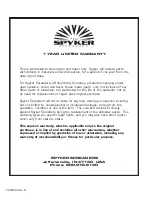
1008290 Rev. C
10
READ BEFORE USING
Now You Are Ready To Put
Material In The Hopper
WARNING:
Avoid Injury! Chemicals can be
dangerous. Avoid injury to operators or bystanders.
• Make sure the rate gate is in the closed position.
• Read chemical container label for handling
instructions. A Material Safety Data Sheet (MSDS)
should be supplied by the chemical dealer and
provides proper safety information.
• Wear proper clothing and safety equipment while
handling or applying chemicals.
• Prohibit all smoking, drinking, and eating around
chemicals.
• When spreading products containing herbicides,
exercise extreme caution with respect to careless
spreading and to wind-drift. Contact Of Some
Products On Some Plants Can Be Fatal.
• Fill the spreader on a fl at, level surface only. Fill on
sidewalk, driveway, cardboard, etc. to avoid material
loss.
• When
fi lling hopper with material, always use screen
to help break up clumps.
Now You Are Ready To Spread
• Keep spinner blade clean. Excess material build-up
can cause an uneven spread pattern.
• Keep the impeller level when spreading.
• DO NOT overload. Maximum capacity is 120 lbs.
• DO NOT use on windy days.
• Spread header strips at the ends of the area
OPPOSITE of the direction of spreading. This will
provide a "turn-around" area, an area to re-align the
spreader for the return spread.
• Example shown is for 6 ft. wide spread. Make the
fi rst spread pass at one-half the spread width from
the edge of the spreading area or in this case,
approximately 3 feet (or one big step).
• Additional spreading passes will be at the full spread
width or approximately 6 ft. apart.
• TAKE A SIGHTING AT THE FAR END. Keep your eye
on the sighting as you spread. You will not need
to wonder where you are or where you have been.
Continue until spreading is completed.
• Left over fertilizer can be spread under trees and
other high feeding areas without showing "edge of
spread" lines.
Tip:
When not spreading, and if pushing the spreader
some distance, tip the spreader so only the idle wheel is
on the ground.
Header
6’
6’
3’
Header
Cleaning The Spreader Is Part
Of The Spreading Job
Clean and oil spreader immediately after each use.
Method #1 - Wipe spreader thoroughly with an oily cloth.
Oil all bearings and bearing areas.
Method #2 - Wash, rinse, and dry the spreader. Note:
Drying takes time. Moisture trapped in bearing areas is
slow to go. Immediately after drying - oil all bearings and
moving parts. Make certain all operations are thorough.
NOTE: Good "Dry Cleaning" is preferable to poor "Wet
Cleaning".
• It is virtually impossible to have rust and corrosion on
a clean, dry, oiled surface.
• Again - just before using - oil all bearings and moving
parts.
• In storage, ideally the spreader should be hung by
the handle. In any case, do not pile weight on the
spreader, as excess weight over a period of time can
distort the tires.
Oil Bearings And All Moving
Parts
Make sure the spreader is running freely!


